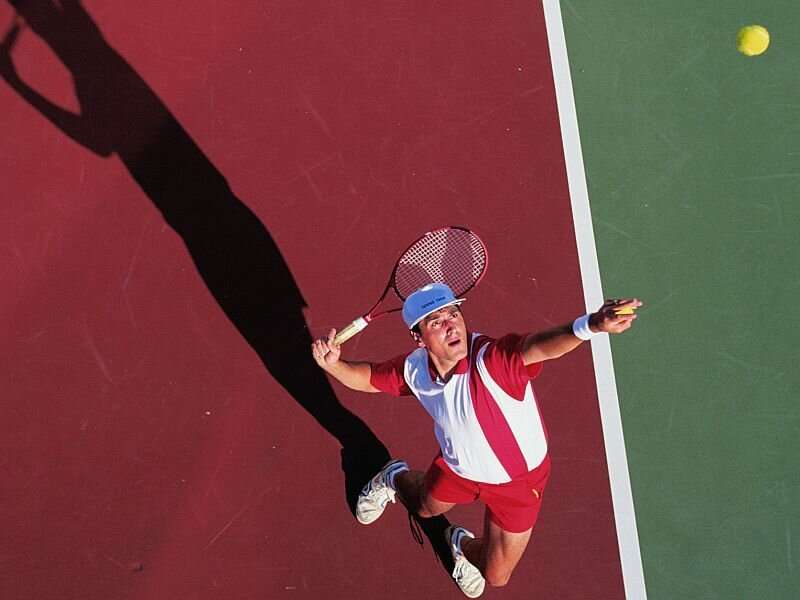

Returning to golf, tennis or pickleball after shoulder replacement surgery shouldn’t be too hard.
Healing does take time, but within a few months most people can get back to play at their pre-surgery level without the pain that they experienced before, a pair of new studies show.
“Recovery after both an anatomic and reverse shoulder replacement or from any shoulder replacement is identical,” said Dr. Jonathan Levy, director of the Levy Shoulder Center at the Paley Orthopedic and Spine Institute in Boca Raton, Fla., who led both studies.
“Patients are protected for the first six weeks and allowed to stretch for the next six weeks, but not allowed to return to the sport for at least three months,” he said.
On average, it took patients about six months to play at their former level, Levy said. “But they were given the green light beginning at around three months,” he added.
Recovery after shoulder replacements is relatively straightforward, Levy said.
“It’s not an extraordinarily painful recovery,” he said. “If people are taking pain medication, it’s for a very short time. It’s just going through the stages of recovery where you go through healing, stretching, and then strength recovery and return to activity.”
The first study included 69 golfers who had shoulder replacement surgery. Of this group, 36 returned to the golf course six months after surgery and 60 were playing within a year.
Researchers found no significant changes in their golf handicap score after shoulder replacement, and they were playing with much less pain.
Driving distance improved for 52% of patients.
In the second study, Levy’s group looked at 43 shoulder replacement patients who played racquet sports such as tennis or pickleball.
After surgery, four patients didn’t play again. Of the 39 patients who were still able to play, 18 were on the court within six months and 31 had begun playing a year after their operation.
Performance after surgery stayed the same or improved in 82% of the patients. Most patients saw improvements in their forehand, backhand, serving and ability to sustain a volley, as well as ball speed, the researchers noted.
Just like the golfers, enjoyment of the sport improved or stayed the same. Pain relief also improved significantly, researchers found.
“If you are interested in being able to participate in golf, or tennis or racquet sports, you can expect to do so after a shoulder replacement,” Levy added.
The findings are slated for presentation Tuesday at a meeting of the American Academy of Orthopaedic Surgeons meeting, in Las Vegas. Findings presented at medical meetings are considered preliminary until published in a peer-reviewed journal.
Dr. Nicholas Sgaglione, senior vice president for orthopedics at Northwell Health in New Hyde Park, N.Y., has been doing shoulder replacement for 34 years. He said that many patients can expect to resume racquet sports and golf after the surgery.
Sgaglione, who was not part of the studies, explained that there are three types of shoulder replacement. In one, both the socket and ball are replaced. Reverse shoulder replacement is done for patients who also have rotator cuff tendon disease. The third type repairs a broken shoulder.
Replacement of both the socket and ball due to arthritis is the most common procedure and the one most likely to result in a return to golf and racquet sports at the same level as before, he said.
Return to play also depends on how much stress patients put on their new joint, Sgaglione said. People who play competitive sports might not get back to their previous level, but recreational players most likely will, he said.
Much depends on the sport, Sgaglione said.
“Golf is much more forgiving than tennis and pickleball is more forgiving than tennis,” he said.
“Lower demand in terms of shoulder replacement versus higher would be golf, bowling and some types of swimming,” Sgaglione said. “Higher demand might be tennis, softball, squash, certain levels of skiing and biking.”
Getting shoulder replacement when joint deterioration starts usually means faster recovery and better outcomes, Sgaglione said. Going in strong before surgery by getting in shape is also important, he added.
“Try to do some stretching, some exercises, and try to do some conditioning of the adjacent musculature before you have surgery so that you go in strong,” Sgaglione advised. “Once you have had surgery use common sense in recovery by not putting excess stress on the joint.”
More information:
For more on shoulder replacement, see the American Academy of Orthopaedic Surgeons.
Copyright © 2023 HealthDay. All rights reserved.
Source: Read Full Article